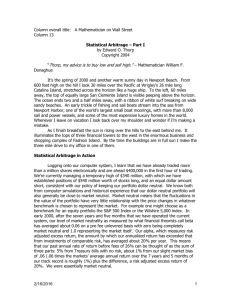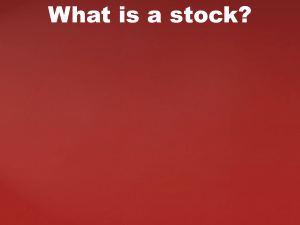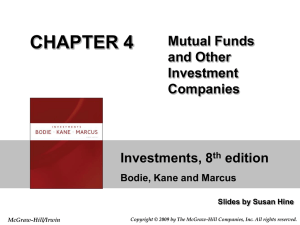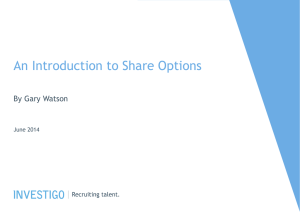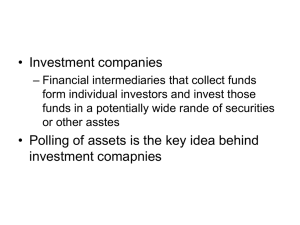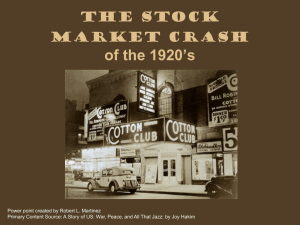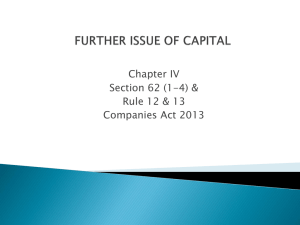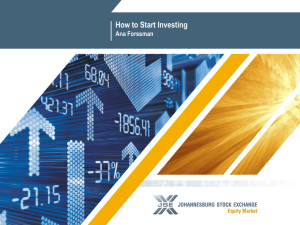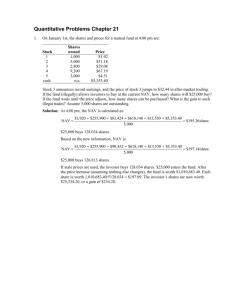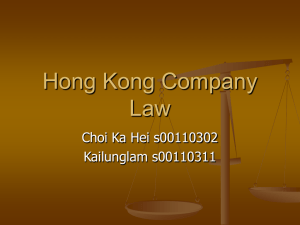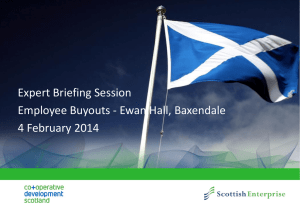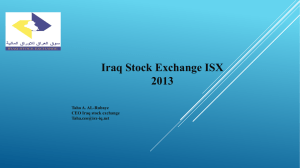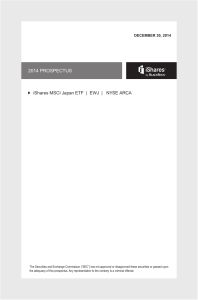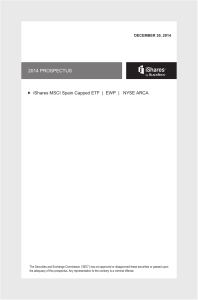Chapter 5 & 6 The Federal Reserve & Monetary Policy
advertisement
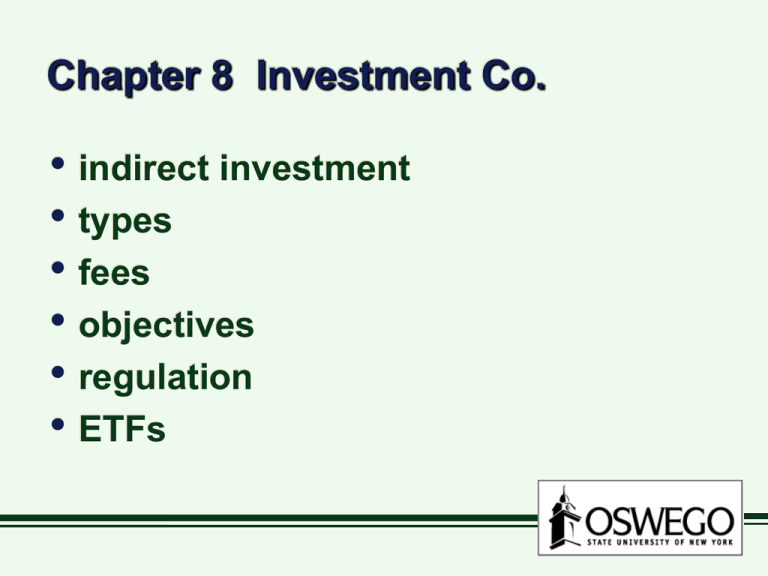
Chapter 8 Investment Co. • indirect investment • types • fees • objectives • regulation • ETFs I. Indirect investment • investment co. • pools investor funds purchases & manages portfolio direct investments investors own shares of portfolio indirect investment advantages • diversification & asset choice • • small amount of capital professional management lower transactions costs trading information disadvantages • lack of control over portfolio • choice of assets tax consequences of trading lack of voting rights that come w/ common stock II. Types Open-end funds (mutual funds) sell new shares, redeem existing shares # shares changes over time • share price based on NAV NAV = portfolio value - liabilities # shares outstanding NAV computed at close of day NAV changes with price of assets in portfolio growth of mutual funds • less than 600 1980 • over 8000 today ($6.2 trillion) • assets concentrated with largest funds why? growth of 401(k)s, IRAs demographics (baby boomers) Closed-end funds • < 500 funds ($130 billion) • fixed # shares initially issued • no later sales or redemptions # of shares is fixed shares bought and sold in secondary market price depends on supply & demand • share price & NAV • price < NAV -- trading at a discount price > NAV -- trading at a premium many closed end fund shares trade a a discount Unit Trusts • # shares fixed • typically invest in bonds • portfolio is fixed: no active trading • fixed termination date III. Mutual fund fees • sale charges • operating expenses Sales charges • funds originally sold 2 ways: sales force, w/ commission -- front-end load (8.5% max) -- pay when purchase shares -- back-end load (8.5% max) -- pay when redeem shares -- level loads (.75% max) -- annual fee • buy funds directly -- no sales charge -- no load funds today many distribution channels fund supermarkets fund families “distribution is king” Operating Expenses • management fee • distribution fees • 12b-1 fees (SEC rule) 1% max (100 basis pts.) cover marketing costs other trading, records, auditing All fees • NASD, SEC set some limits on fees • most funds charge much less average actively managed funds: 1.44% index funds: .4% impact of fees • $10,000, 10% annual return, 20 yrs. • if fees 1.5% annually, • $49,725 if fees .5% annually, $60,858 IV. Fund Objectives • funds differ in types of assets investment goals Equity funds • income funds • • stocks w/ high, stable dividends growth funds stock w/ high expected capital gains growth/income funds • value funds • “bargain” stocks -- low PE ratio -- high book-to-value ratio sector funds stocks in specific industry health care, biotech, financial, electronics • market capitalization • small/mid/large cap funds stocks based on size of company -- value of total shares outstanding international/global international stock portfolio or stock in particular region • index funds match performance of stock index -- S&P 500, Wilshire 5000 hold portfolio the matches index passive strategy -- match, not beat, the market’s average return lower expenses • index fund returns slightly below index return operating expenses must hold some cash to redeem shares why I like indexing • 1990-99 S&P 500 index outperformed 76% of all actively managed stock funds Bond funds • U.S. Government • Investment grade corporate • • bond ratings BBB or above High yield corporate junk bonds (rated below BBB) Municipal bonds tax exempt interest Money Market • share price = $1, check-writing • general taxable • U.S. Government • tax-exempt Stocks & Bonds • balanced funds • hybrid funds • asset allocation funds 529 plans for college Fund Families • one investment company • many different funds • Fidelity, Vanguard, Strong, Janus • 400 families top ten hold over 40% of assets look at some top funds • • • • http://quicktake.morningstar.com/Fund/Snapsho t.asp?Country=USA&Symbol=FGRIX http://quicktake.morningstar.com/Fund/Snapsho t.asp?Country=USA&Symbol=VWLTX http://quicktake.morningstar.com/Fund/Snapsho t.asp?Country=USA&Symbol=VFINX http://quicktake.morningstar.com/Fund/Snapsho t.asp?Country=USA&Symbol=FSPHX V. Regulation • SEC is main regulator disclosure rules fees insider trading “truth in advertising” -- returns & risks -- name and objective of fund • NASD is industry self-regulator • sales practices commissions, fees taxation investment co. distributes 90% of income annually fund shareholders taxed on gains -- even if gains are reinvested -- dividends no longer taxable taxation trap • as share holders redeem shares funds sells assets to raise cash remaining share holders face tax liability VI. Exchange-traded funds (ETFs) • like index funds & closed-end fund • shares traded on exchange • trade continually, not just at closing • NAV swap large blocks of stock for ETF shares price is always close to NAV ETF tax advantage • mutual funds • other investors sell shares, -- trigger tax liability for remaining share holders ETFs tax liability only for seller swap shares for underlying portfolio
